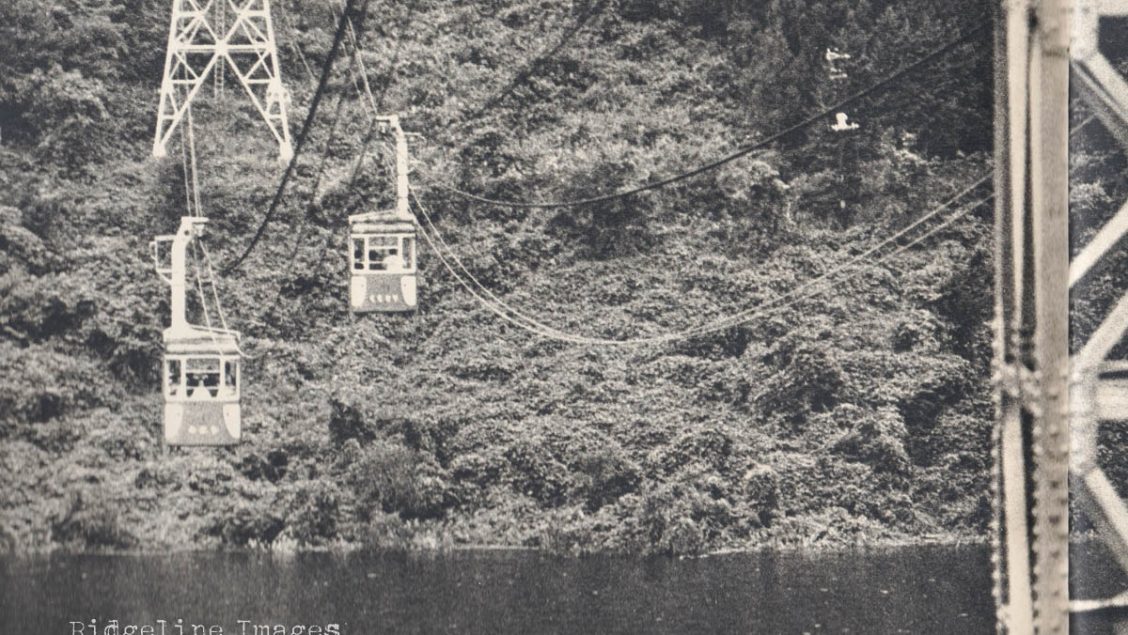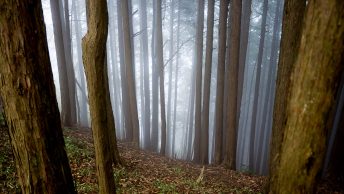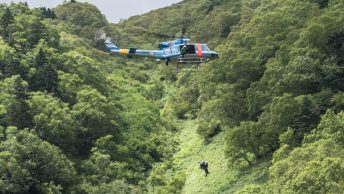Another Piece of the Puzzle
Let’s rewind to the early 1960s in Tokyo. The city was in the midst of massive transition both socially and economically a stark contrast to just 20 years before. If you were a Japanese housewife you pined for the ‘3Cs’ – car, cooler and colour TV. Speaking of which a Toshiba colour television back then sat you back a lazy 100,000 yen. If on the other hand you were a dyed in the wool Japanese salaryman, which happened to be most businessmen, you’d probably be thankful to make the last train home each night.
To give some perspective from 1955 to 1973, Japan had a staggering annual growth rate of 9.1 percent, far in excess of Europe and the US during the same period. Not only did this led to an increase consumption of consumer goods but coincided with huge public works projects including the bullet train which debuted 1964, expressways, bridges linking Honshu and Shikoku and infrastructure projects to shore up the Tokyo Olympics. Inevitably there were developments that weren’t stellar a precursor if you like to early Heisei era style “bridges to nowhere” that sounded good on paper yet were a resounding failure. The Okutama Ropeway happened to be one of those.
For a bit of background about the Okutama Ropeway please check out this haikyo report from a few years back. In brief, it was a tourist ropeway (aerial tramway) completed in October 1961 by Nippon Cable Co., Ltd, spanned a remote section of Lake Okutama and ran between two station around 600 metres apart. Its inaugural ride was made on on January 29, 1962. After operating for only five short years management decided to wind up operations at the end of 1966. Most of the ropeway’s infrastructure including the support pylons, cables, station buildings and its cable cars remain largely intact and relatively free of graffiti and vandalism.
It was the first and only aerial ropeway to have operated in the Tokyo Metropolis. The only thing remotely similar is the Takao Chairlift. The Mitake and Takao Tozan Cable Cars are technically funiculars as they are pulled up the slope using a cable. The Ogouchi Tourism Development Company (Ogouchi Kankou Kaihatsu O.K.K.) the outfit who headed the Okutama Ropeway no doubt held high hopes for its success. During the early 1960s there were six other ropeways under construction in the Kanto region – most of which are still in operation. From the O.K.K. headquarters in downtown Nihonbashi they must have pictured sightseers taking in fine views back through the Akigawa Valley as it made its leisurely 6-minute trip across the lake.
The ropeway was also promoted through the Ogouchi Onsen Health Center on the north bank not far from Kawano Station. In its heyday this popular hot spring resort (also under the management of O.K.K.) arranged regular bus tours from Tachikawa, Shinjuku and Shibuya. Half price ropeway tickets were available to health center customers.
There are only titbits of information and heresy as to what ultimately caused its cessation. A falloff in patronage is obviously one factor although interestingly visitor numbers spiked in 1966 after ticket prices were slashed by almost 30 percent. I initially thought that newly constructed bridges across the lake may have been another nail in the coffin. However, the Mitobashi Bridge which completes the transport link from Miyamabashi Bridge to the opposite side of the lake didn’t open until 1970 thus granting it a monopoly of sorts. At the time the only access to popular Mt. Mito trailhead on the undeveloped south bank was either via the Tozura (Mugiyamauki) pontoon bridge as it was known back then or this ropeway.
It looked like this was going to be the end of road as far as unravelling the mystery. That is until I was rummaging through a box of old Asahi Gurafu a.k.a. The Asahi Picture News (a Japanese weekly pictorial magazine) in a second handbook bookshop in Jimbocho. It was here I came across an October 1965 issue blazoned with colour photograph of the Ogouchi Dam spillway. The headline read “Ogouchi reservoir full to the brim with water”. Inside featured some comparative photos of the ropeway and Lake Okutama from the early 1960s during a period of drought and again later in 1966 after it filled up.
The earlier photos show the cable cars traversing a dry lake bed more akin to an open pit mine. It was even called an “illusive lake” as it had almost dried up. Other photos show the waterline well below the reservoir sluice gate and the pontoon bridge looking rather dishevelled as it sat exposed on the barren soil. In the early 1960s, water shortages in the capital became so severe it had to cut approximately 45 percent of water supply to up to nearly 1 million households – earning it the nickname “Tokyo Desert”.
Perhaps the drought wasn’t its death knell, but it wouldn’t have enticed many to make the long trek out to stare at inhospitable surroundings. The curious part is just after the reservoir reached full capacity and the Asahi Gurafu article was published the Okutama Ropeway ceased operations. As mentioned in the previous blog post, we’ll probably never truly know why it was put into early retirement but was almost certainly attributable to its poor choice of location and limited demand. The last reference to O.K.K. group name was in the 2006 edition of the National Railways Statistical Digest (Tetsudo yoran) or train fanatics (tetsu ota) bible.
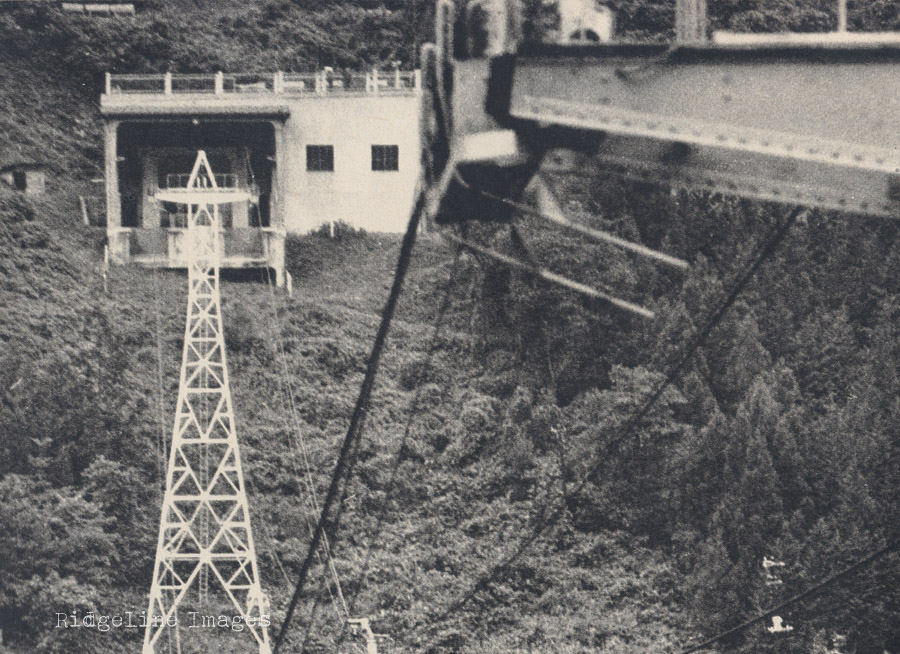
Looking back towards Kawano Station (north bank).
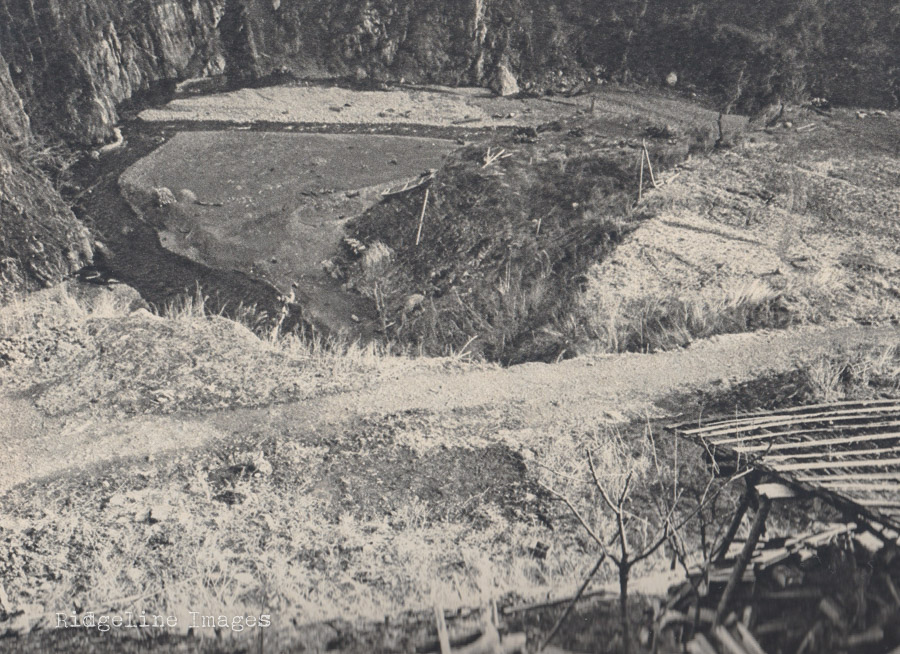
Ogouchi Dam almost competely dried up in the early 1960s.
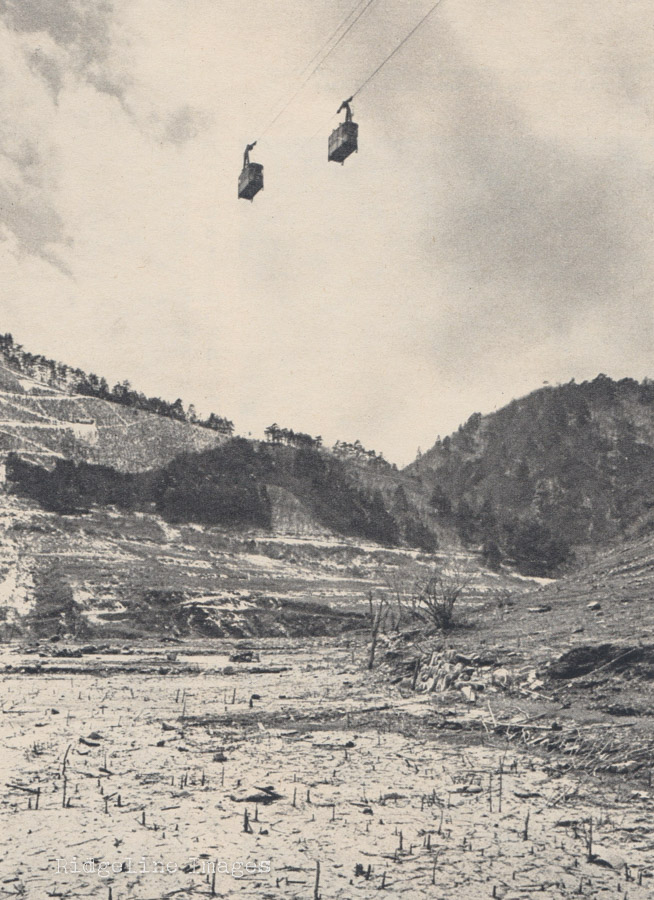
Cable cars traversing the dry lake bed.
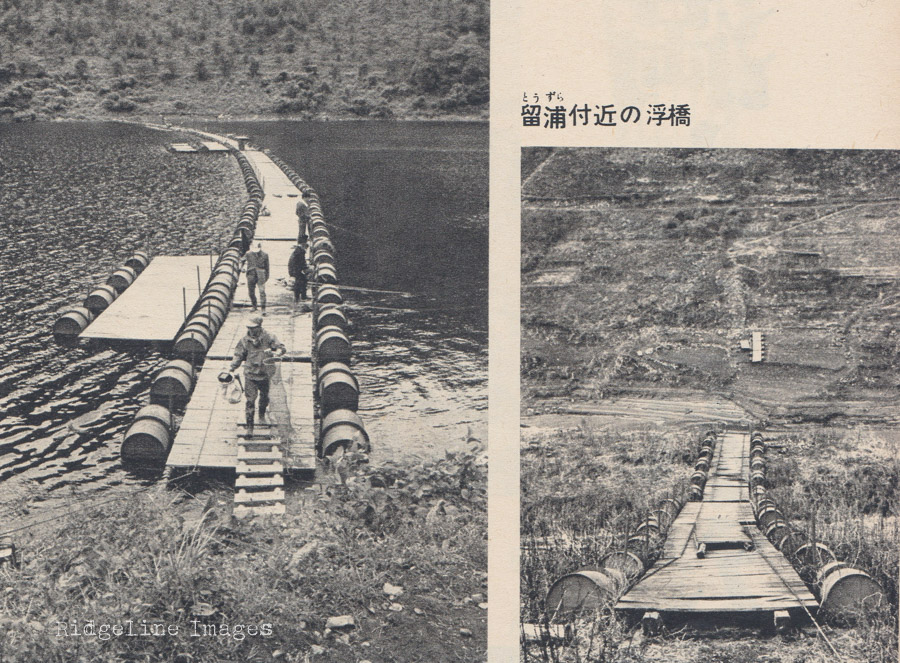
Tozura (Mugiyamauki) pontoon bridge (early 1960s on right).
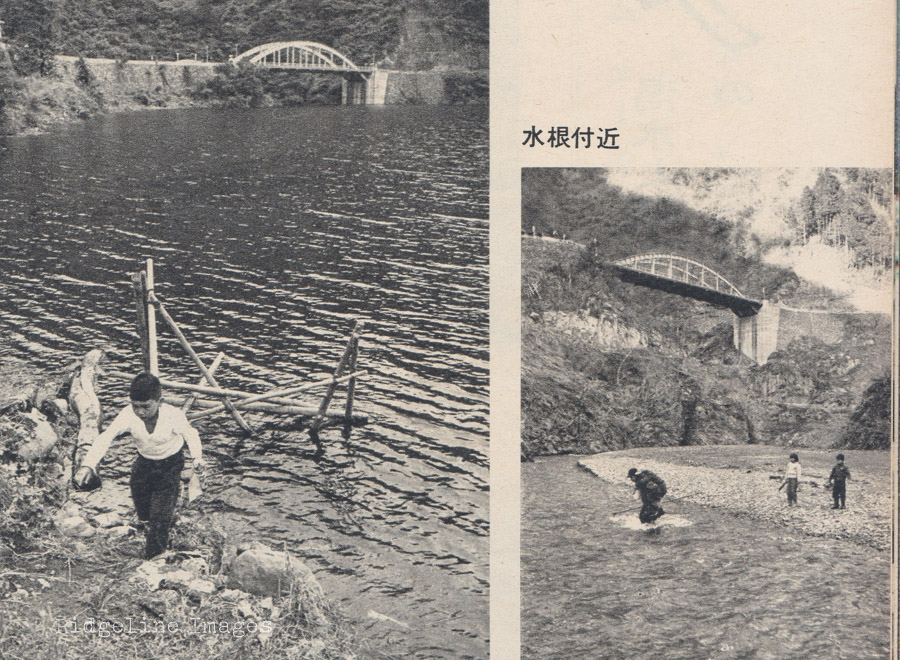
View up to the Miyamabashi Bridge (early 1960s on right).
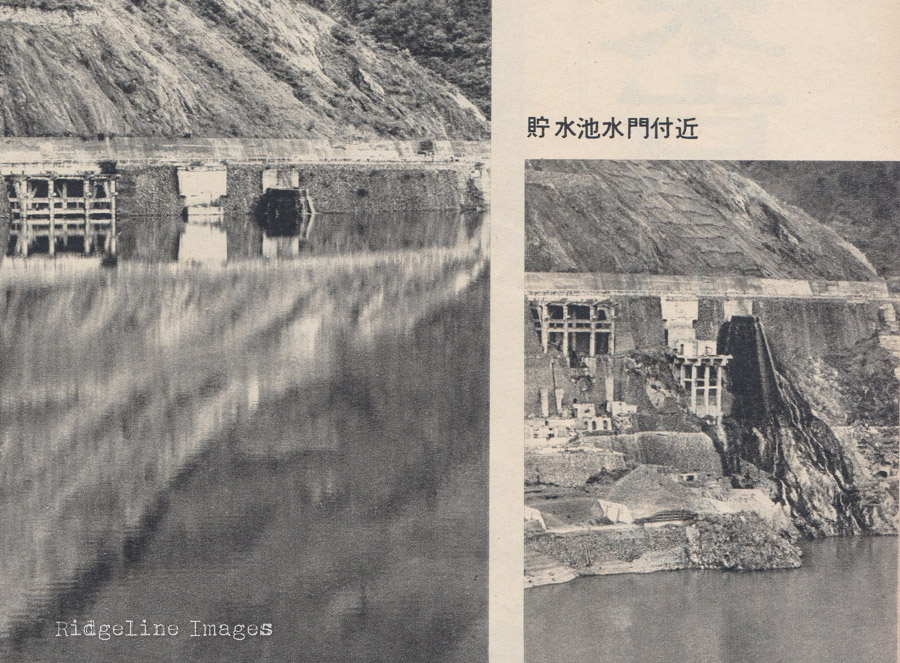
Waterline well below the reservoir sluice gate (early 1960s on right).
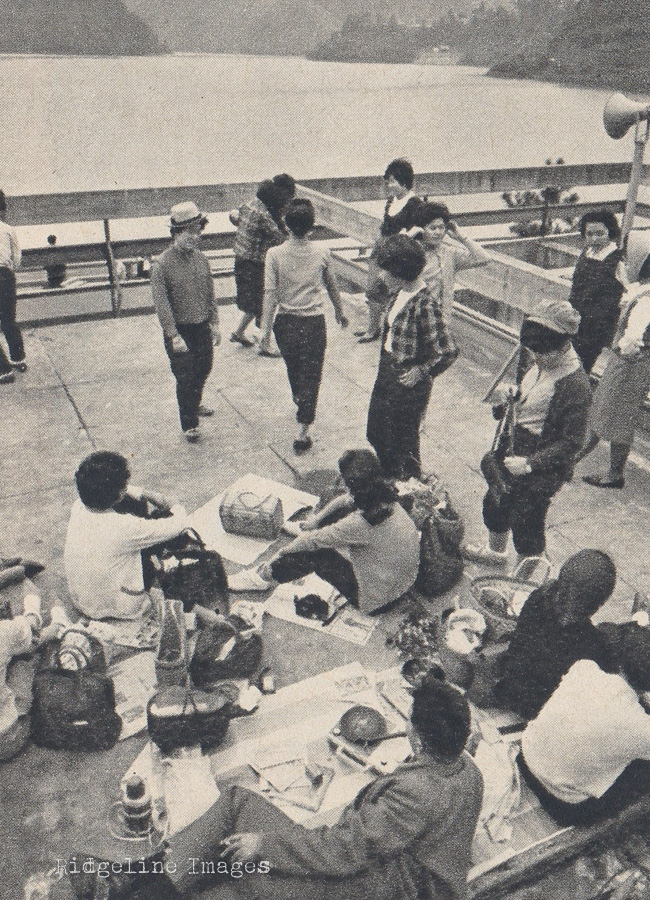
Relaxing beside Lake Okutama in 1965.
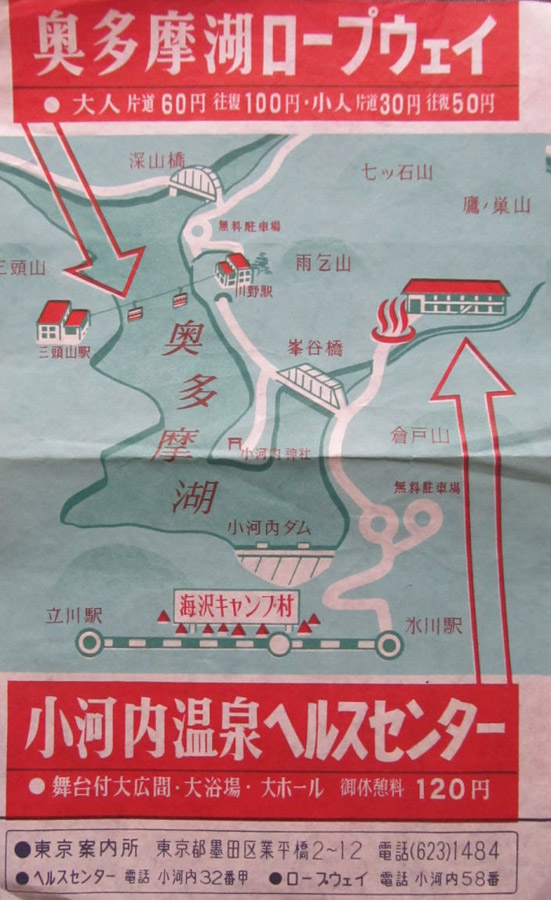
The ropeway was also promoted through the Ogouchi Onsen Health Center.
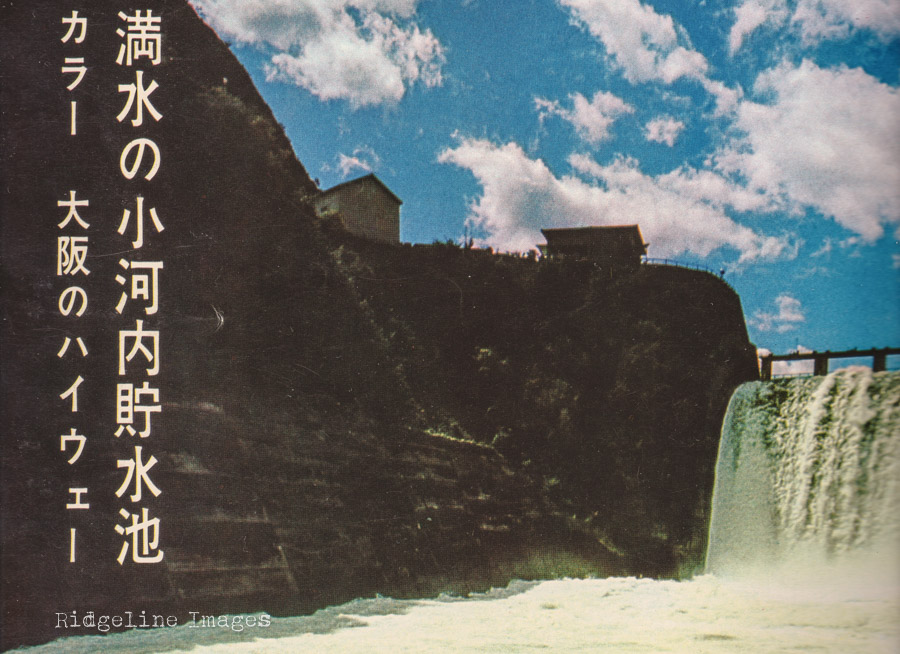
Ogouchi reservoir full to the brim with water. Image: The Asahi Picture News: Oct 15, 1965.
